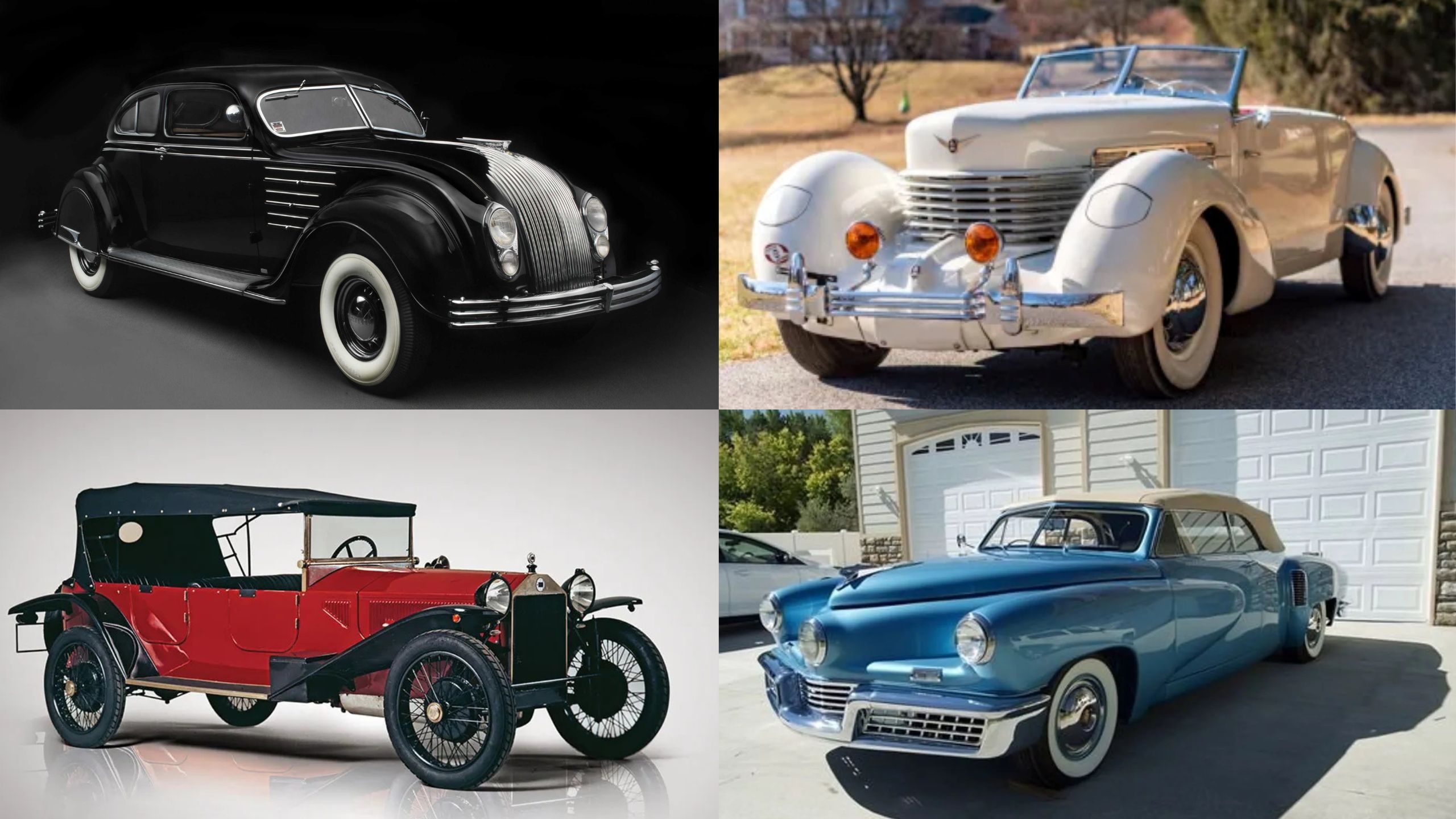Innovation is the heartbeat of the automotive industry. Throughout history, there have been cars that have not only pushed the boundaries of design and engineering but have also set new standards and influenced the future of automotive technology.
These vehicles, ahead of their time, have introduced groundbreaking features and innovative concepts that have reshaped the way we think about cars.
From pioneering safety advancements to revolutionary powertrains, these cars have left an indelible mark on the industry and paved the way for future innovations.
In this article, we will explore ten cars that were truly ahead of their time in terms of innovation. These vehicles stand out for their unique contributions to automotive history, whether through the introduction of new technologies, advanced materials, or visionary designs.
They have set benchmarks in performance, safety, efficiency, and luxury, often becoming icons and reference points for future generations of automobiles. Let’s look into the fascinating stories and technological marvels behind these trailblazing cars.
1. Tucker 48
The Tucker 48, also known as the Tucker Torpedo, is an iconic automobile that showcased innovative designs and advanced engineering far ahead of its time. Introduced in 1948 by Preston Tucker, this car brought several revolutionary features that made it stand out in the automotive industry.
Despite facing numerous challenges that led to its limited production, the Tucker 48 remains a symbol of innovation and visionary engineering. One of the most notable features of the Tucker 48 was its focus on safety.
The car was equipped with a reinforced safety cage and a padded dashboard to protect occupants in the event of a collision. The windshield was designed to pop out during an accident, reducing the risk of injury from shattered glass.
The Tucker 48 also introduced a unique “Cyclops Eye” center headlight that turned with the steering wheel, improving visibility around corners and enhancing driver safety. The car was powered by a rear-mounted, horizontally opposed 6-cylinder engine, originally designed for use in helicopters.
This engine produced 166 horsepower, allowing the Tucker 48 to reach a top speed of around 120 mph. The rear-engine layout provided excellent weight distribution and handling characteristics, making the car agile and responsive on the road.
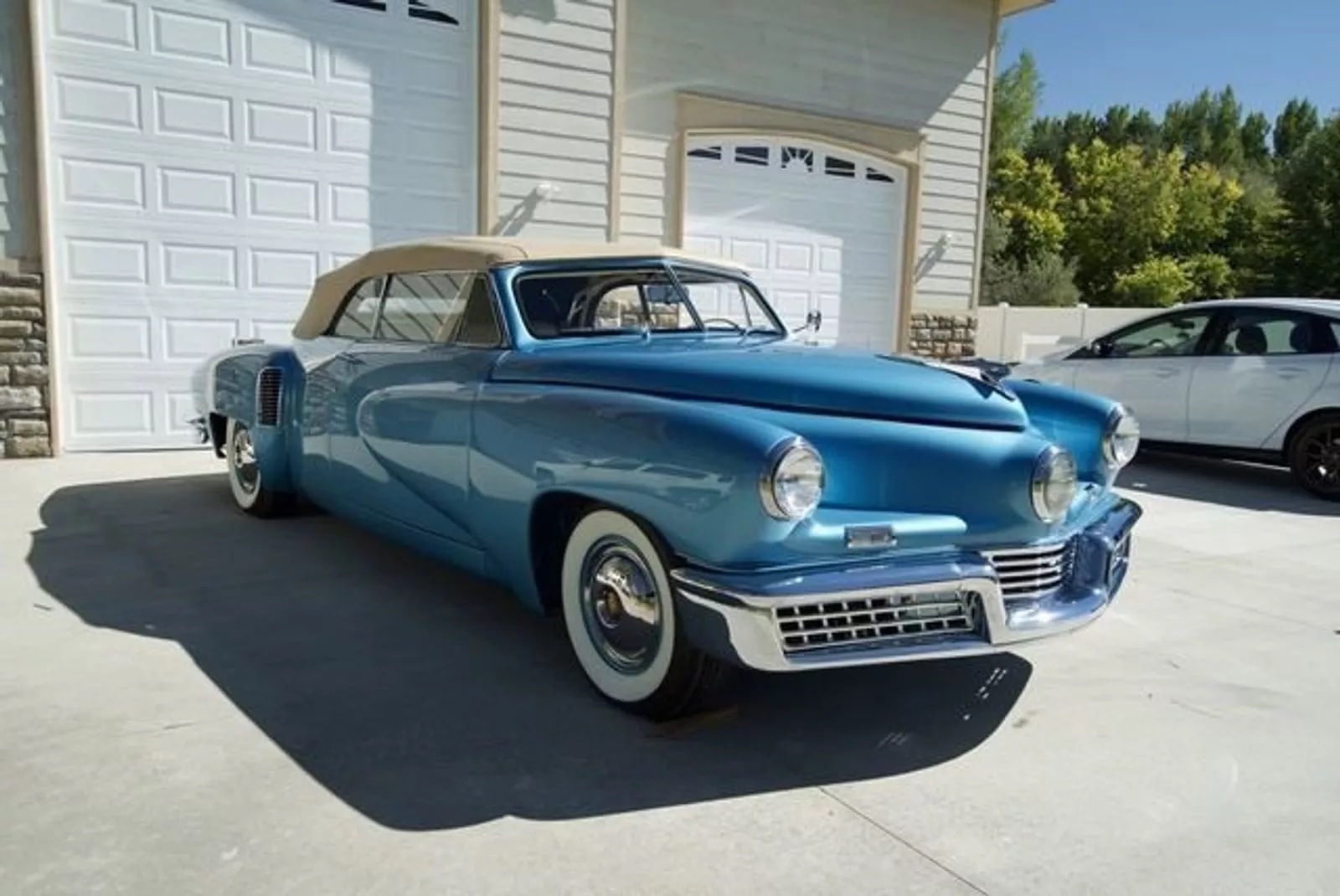
Another innovative feature of the Tucker 48 was its fully independent suspension system, which offered a smooth and comfortable ride. The car also featured a torque converter transmission, allowing for seamless gear changes and enhanced performance.
Additionally, the Tucker 48 boasted a central lockable storage compartment located in the front trunk, providing ample space for luggage and other items.
Despite its groundbreaking design and advanced features, the Tucker 48 faced significant challenges that ultimately led to its demise.
Financial difficulties, production delays, and legal battles plagued the development process. The Securities and Exchange Commission (SEC) launched an investigation into the company’s fundraising practices, further complicating matters. As a result, only 51 Tucker 48 cars were produced before the company was forced to shut down.
The legacy of the Tucker 48 endures to this day, celebrated as a symbol of innovation and entrepreneurial spirit. The surviving Tucker 48 cars are highly sought after by collectors and enthusiasts, and they continue to fascinate audiences with their futuristic design and advanced features.
The story of the Tucker 48 has inspired numerous books, documentaries, and a Hollywood movie, highlighting its significance in automotive history.
The Tucker 48 was a revolutionary vehicle that introduced numerous innovations and set new standards for safety, performance, and engineering. Despite its short-lived production run, the Tucker 48 remains an iconic and influential car that was undeniably ahead of its time.
2. Oldsmobile Toronado
The Oldsmobile Toronado, introduced in 1966, was a groundbreaking vehicle that set new standards for engineering, design, and innovation.
As the first American car with front-wheel drive since the 1930s Cord, the Toronado marked a significant departure from the conventional rear wheel drive layouts that dominated the automotive industry at the time.
The Toronado’s combination of bold styling, advanced engineering, and innovative features made it a true pioneer automobiles.
One of the most significant innovations of the Toronado was its front-wheel-drive system, which provided improved traction, stability, and handling.
This layout allowed for a more spacious interior and a lower center of gravity, enhancing the car’s performance and ride quality.
The Toronado’s front wheel drive system was powered by a 7.0-liter V8 engine that produced 385 horsepower and 475 lb-ft of torque, making it one of the most powerful cars of its era.
The engine was mated to a Turbo-Hydramatic 425 automatic transmission, which was specifically designed for front wheel drive applications. The Toronado’s design was equally innovative, featuring a sleek and aerodynamic silhouette that set it apart from other cars of the time.
The car’s long hood, short rear deck, and hidden headlights gave it a distinctive and futuristic appearance. The Toronado’s body was constructed using a unique unitized frame and body structure, which provided increased rigidity and reduced weight. This innovative design contributed to the car’s impressive performance and handling characteristics.
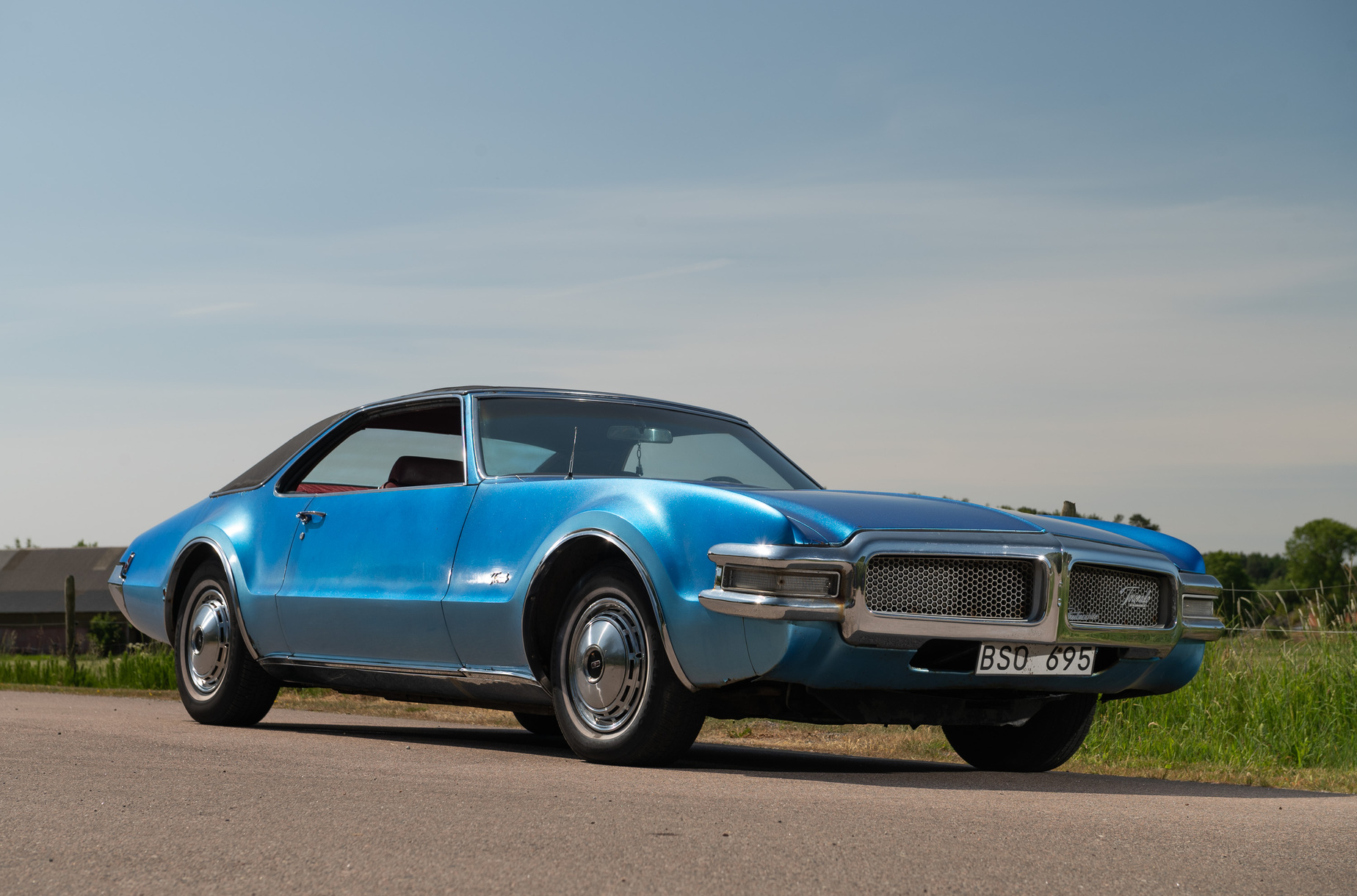
Inside, the Toronado offered a luxurious and well-appointed cabin with a range of advanced features. The car’s interior was designed with comfort and convenience in mind, featuring spacious seating, high-quality materials, and a host of modern amenities.
The Toronado was one of the first cars to offer a tilt-and-telescoping steering wheel, allowing drivers to easily adjust the steering column for optimal comfort and control.
Additionally, the car was equipped with a unique drum-type speedometer, which provided a clear and easy to read display of vehicle speed.
The Toronado also introduced several safety innovations that were ahead of their time. The car’s front wheel drive layout improved stability and control, reducing the risk of skidding and loss of traction.
The Toronado was also equipped with power-assisted front disc brakes, providing enhanced stopping power and shorter braking distances. These safety features contributed to the car’s reputation as a safe and reliable vehicle.
The success of the Oldsmobile Toronado paved the way for the widespread adoption of front-wheel drive in the automotive industry. Its innovative engineering and design influenced the development of future front wheel drive vehicles and set new standards for performance, handling, and safety.
The Toronado’s impact can still be seen in modern cars, many of which have adopted front wheel drive layouts and advanced engineering solutions. The Oldsmobile Toronado was a groundbreaking vehicle that introduced numerous innovations and set new benchmarks for engineering, design, and safety.
Its combination of advanced front-wheel-drive technology, bold styling, and luxurious features made it a true pioneer and a car that was undeniably ahead of its time.
3. Cord 810/812
The Cord 810 and 812, introduced in 1936 and 1937 respectively, were groundbreaking vehicles that showcased advanced engineering, innovative design, and cutting-edge technology.
Produced by the Cord Automobile Division of the Auburn Automobile Company, these cars were among the first to feature several automotive innovations that would later become industry standards. The Cord 810 and 812 are widely regarded as some of the most iconic and influential cars of the pre-war era.
One of the most significant innovations of the Cord 810 and 812 was their front wheel drive layout. At a time when most cars were rear-wheel drive, the Cord’s front-wheel-drive system provided improved traction, stability, and handling.
This layout allowed for a lower and more aerodynamic body design, as well as a more spacious and comfortable interior. The Cord 810 and 812 were among the first American cars to offer front-wheel drive, setting a precedent for future automotive designs.
The Cord 810 and 812 were powered by a Lycoming V8 engine, which produced 125 horsepower in the naturally aspirated 810 model and up to 190 horsepower in the supercharged 812 model.
The engine was paired with a pre-selector semi-automatic transmission, which allowed drivers to choose gears in advance and engage them by pressing the clutch pedal.
This innovative transmission system provided a smoother and more convenient driving experience, making the Cord 810 and 812 stand out from their contemporaries.
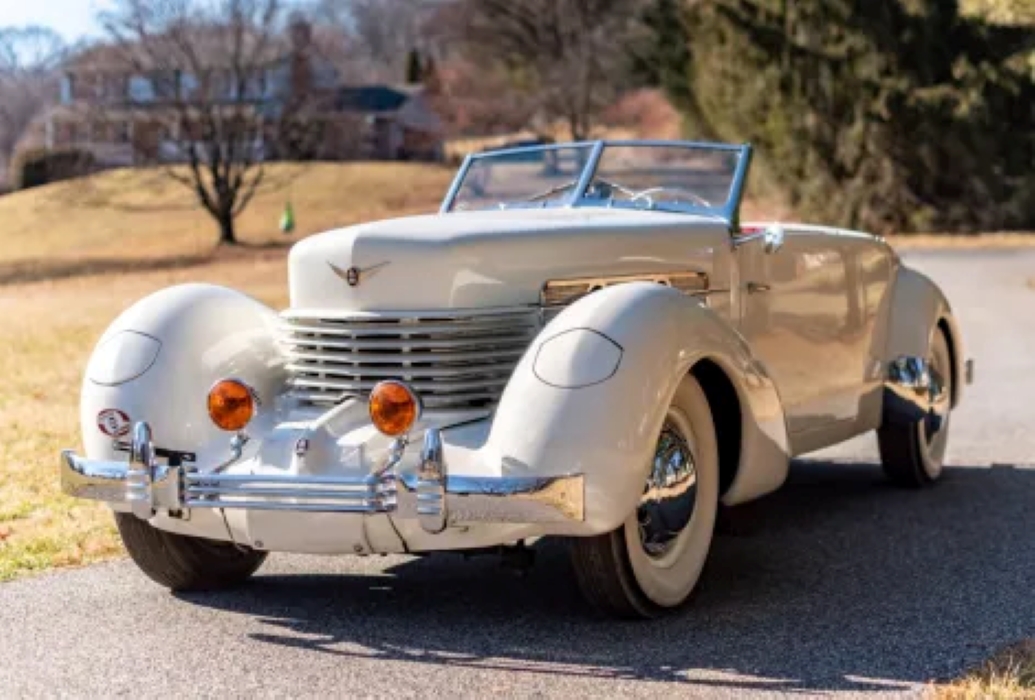
The design of the Cord 810 and 812 was equally groundbreaking. Styled by renowned designer Gordon Buehrig, these cars featured a sleek and aerodynamic body with smooth, flowing lines and a low-slung profile.
The most distinctive design element was the hidden headlights, which were mounted in the front fenders and could be operated by a hand crank inside the car.
This feature not only improved the car’s aerodynamics but also gave it a futuristic and elegant appearance. The Cord 810 and 812 were the first production cars to feature hidden headlights, an innovation that would later be adopted by many other manufacturers.
The interior of the Cord 810 and 812 was designed with comfort and luxury in mind. The spacious cabin featured high-quality materials, comfortable seating, and a range of advanced features for its time.
The car’s dashboard was equipped with a full set of instruments, including a tachometer, oil pressure gauge, and fuel gauge, providing drivers with all the information they needed at a glance. The steering wheel was positioned close to the dashboard, allowing for a more relaxed driving position and improved visibility.
Despite their numerous innovations and striking designs, the Cord 810 and 812 faced several challenges during their production. The cars were plagued by mechanical issues and production delays, which affected their reliability and reputation.
Additionally, the high cost of production and the onset of the Great Depression made it difficult for the Auburn Automobile Company to sustain the Cord brand. As a result, production of the Cord 810 and 812 was discontinued in 1937, with only a limited number of units produced.
The Cord 810 and 812 were groundbreaking vehicles that introduced numerous innovations and set new standards for engineering, design, and technology.
Their advanced front-wheel-drive system, innovative transmission, and striking design elements made them true pioneers in the automotive world. Despite their challenges, the Cord 810 and 812 remain iconic and influential cars that were undeniably ahead of their time.
4. Chrysler Airflow
The Chrysler Airflow, introduced in 1934, was a revolutionary vehicle that set new standards for automotive design, aerodynamics, and engineering.
As one of the first cars to be developed with a focus on aerodynamics, the Airflow represented a significant departure from the boxy and angular designs that dominated the automotive industry at the time.
Despite its commercial challenges, the Chrysler Airflow remains an iconic and influential car that was well ahead of its time.
One of the most significant innovations of the Chrysler Airflow was its aerodynamic design. Engineers Carl Breer, Fred Zeder, and Owen Skelton conducted extensive wind tunnel testing to develop a streamlined body that reduced air resistance and improved fuel efficiency.
The result was a car with smooth, flowing lines, a rounded front end, and a teardrop-shaped rear.
This aerodynamic design not only improved the car’s fuel economy but also improved stability and ride comfort. The car’s revolutionary construction featured a unitized body and frame design, which provided increased strength and reduced weight.
The Airflow’s innovative engineering allowed for a more spacious and comfortable interior, as the car’s floor was flat and the seats were positioned lower than in traditional vehicles. Under the hood, the Chrysler Airflow was powered by a range of inline-six and inline-eight engines, providing smooth and reliable performance.
The engines were mounted further forward in the chassis, resulting in better weight distribution and improved handling. The Airflow also featured a unique “floating power” engine mounting system, which used rubber mounts to isolate engine vibrations and reduce noise, enhancing the driving experience.
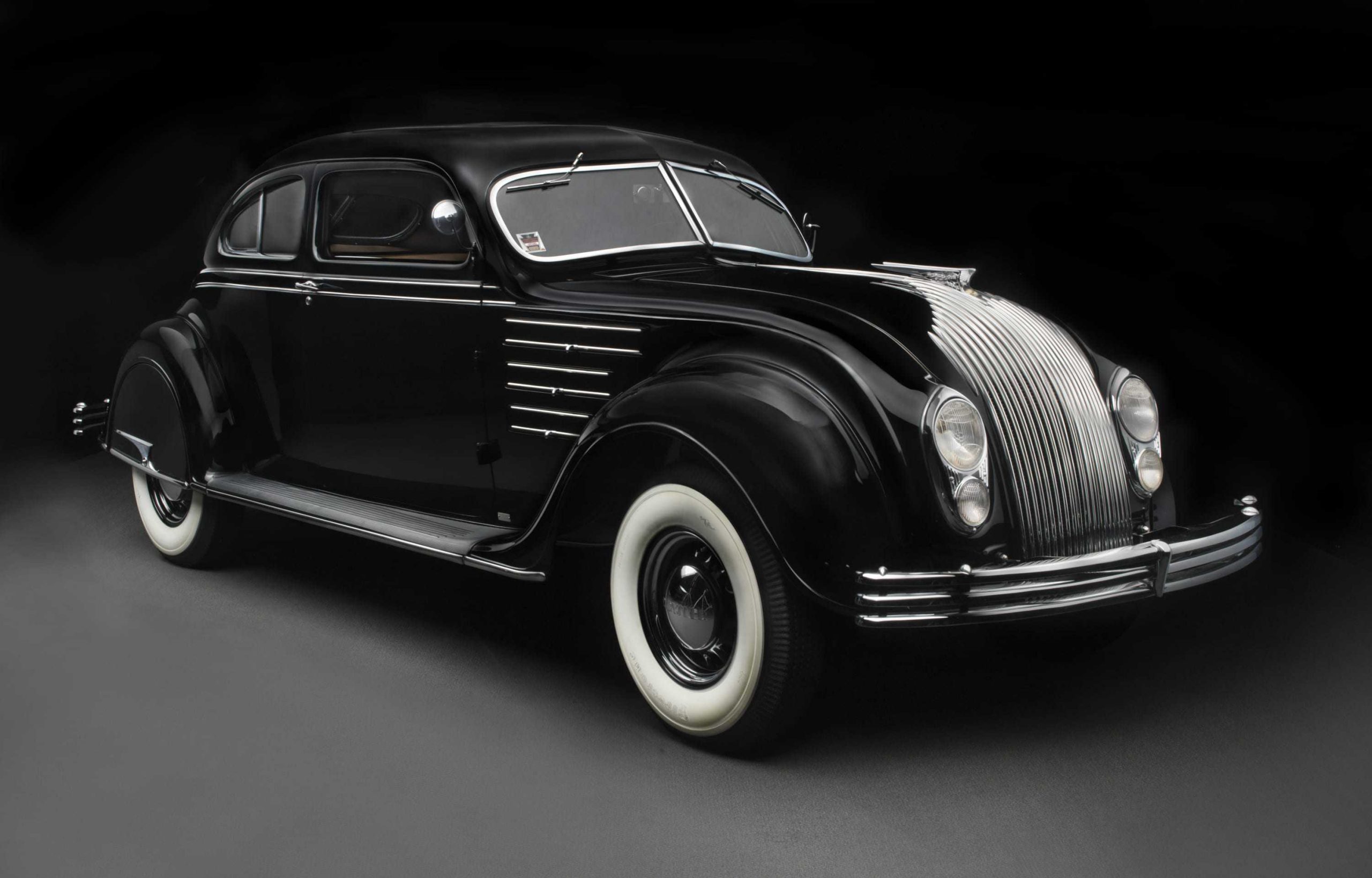
The interior of the Chrysler Airflow was designed with passenger comfort in mind. The spacious cabin offered ample legroom and headroom, and the seats were ergonomically designed to provide maximum support during long journeys.
The car’s dashboard was equipped with easy to read gauges and controls, while the steering wheel was positioned closer to the driver for improved comfort and control.
Despite its numerous innovations, the Chrysler Airflow faced significant challenges in the market. The car’s radical design was ahead of its time, and many consumers were not ready to embrace its futuristic appearance.
Additionally, Airflow’s initial production models faced quality control issues, which affected the car’s reputation and sales. As a result, the Airflow was not a commercial success, and production was discontinued in 1937.
However, the Chrysler Airflow’s legacy endures as a pioneering vehicle that introduced several advancements in automotive design and engineering. Its focus on aerodynamics, innovative construction techniques, and commitment to passenger comfort set new standards that would later be adopted by the industry.
The Airflow’s influence can be seen in the design of modern cars, many of which incorporate aerodynamic principles and unitized body construction.
The Chrysler Airflow was a revolutionary vehicle that set new benchmarks for automotive design, aerodynamics, and engineering. Its innovative features and advanced construction made it a true pioneer and a car that was undeniably ahead of its time.
Also Read: 10 Most Reliable Cars That Last Over 200,000 Miles
5. Subaru XT
The Subaru XT, introduced in 1985, was a unique and innovative sports coupe that showcased Subaru’s commitment to advanced engineering and distinctive design.
Known as the Alcyone in Japan, the XT was a bold departure from conventional automotive styling and featured several groundbreaking technologies that set it apart from its competitors.
One of the most distinctive features of the Subaru XT was its futuristic and aerodynamic design. The car’s wedge-shaped body, pop-up headlights, and flush-mounted glass surfaces contributed to its sleek and low-drag appearance.
The XT’s design was heavily influenced by aircraft engineering, and its aerodynamic profile resulted in a drag coefficient of just 0.29, making it one of the most aerodynamically efficient cars of its time.
Under the hood, the Subaru XT was powered by a range of horizontally opposed (boxer) engines, which provided a low center of gravity and improved handling characteristics.
The XT was available with both naturally aspirated and turbocharged engine options, with the latter producing up to 111 horsepower. The car’s lightweight construction and advanced suspension system further enhanced its performance and agility.
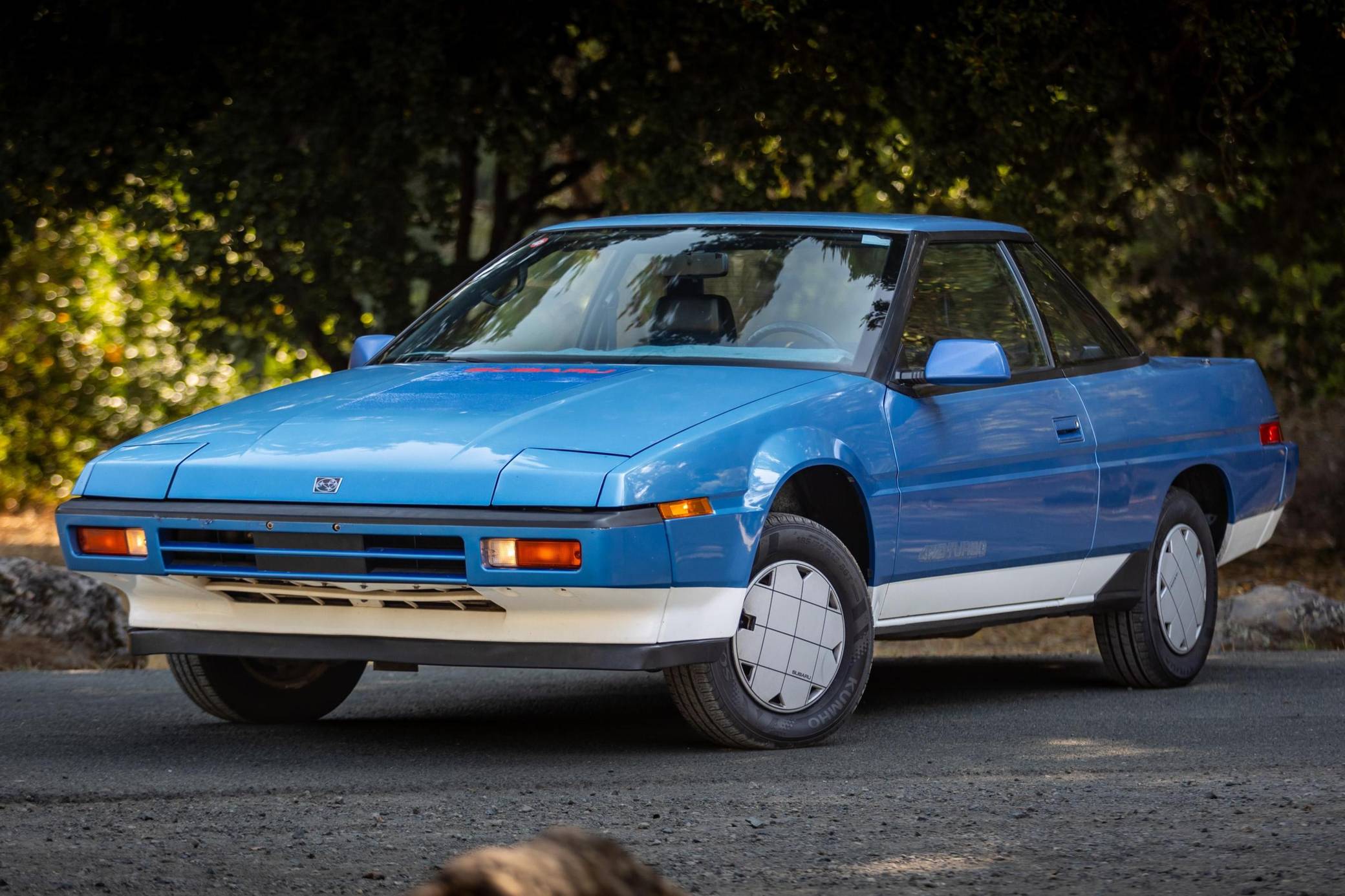
The XT was also equipped with Subaru’s innovative all wheel drive (AWD) system, which provided superior traction and stability in various driving conditions.
This AWD system, combined with the car’s low center of gravity and balanced weight distribution, made the XT a formidable performer on both wet and dry roads. The XT was one of the first sports coupes to offer all-wheel drive, setting a precedent for future performance-oriented vehicles.
Inside, the Subaru XT featured a futuristic and driver-focused cockpit, with a digital instrument cluster, a single-spoke steering wheel, and unique controls inspired by aircraft design.
The car’s interior was designed to provide a comfortable and engaging driving experience, with supportive seats and intuitive controls. The XT also offered advanced features such as a trip computer, climate control, and power windows, making it a well-equipped and modern vehicle for its time.
Despite its innovative design and advanced technology, the Subaru XT faced challenges in the market. Its unconventional styling and niche appeal limited its sales, and production was eventually discontinued in 1991.
However, the XT’s influence can still be seen in Subaru’s commitment to all wheel drive technology and distinctive design.
The Subaru XT was a unique and innovative sports coupe that showcased advanced engineering and futuristic design. Its aerodynamic profile, advanced AWD system, and driver-focused cockpit made it a true pioneer in the automotive world.
Despite its limited commercial success, the Subaru XT remains an iconic and influential car that was undeniably ahead of its time.
6. Mazda RX-7
The Mazda RX-7, introduced in 1978, is a legendary sports car that became renowned for its unique rotary engine, exceptional performance, and timeless design.
Over its three generations, the RX-7 evolved into one of the most beloved and iconic sports cars, earning a reputation for its innovative engineering and thrilling driving experience.
One of the most distinctive features of the Mazda RX-7 was its use of the rotary (Wankel) engine, which set it apart from traditional piston-engine sports cars. The rotary engine, developed by Mazda, was compact, lightweight, and capable of high-revving performance.
The first-generation RX-7 (SA/FB) was powered by a 1.1-liter rotary engine producing 100 horsepower, while later versions featured more powerful 1.3-liter rotary engines with turbocharging options.
The rotary engine’s unique characteristics, such as smooth power delivery and high-revving nature, made the RX-7 a joy to drive.
The RX-7’s lightweight construction and balanced chassis contributed to its exceptional handling and agility. The car’s low center of gravity and near-perfect weight distribution, thanks to the compact rotary engine, provided precise and responsive handling.
The RX-7’s double-wishbone suspension system further enhanced its cornering capabilities, making it a favorite among driving enthusiasts and racers.
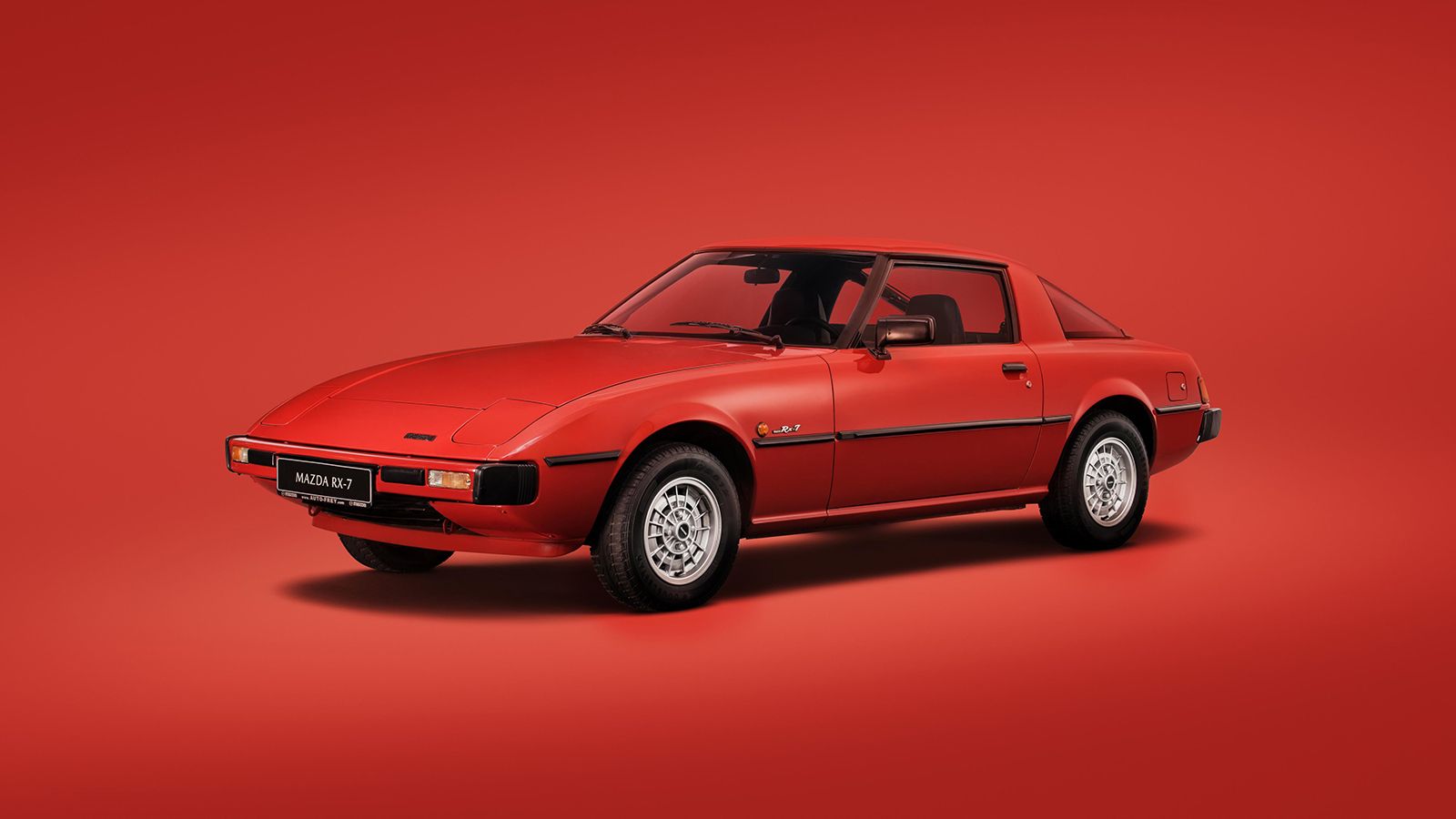
The design of the Mazda RX-7 evolved over its three generations, with each iteration bringing new advancements and refinements. The first-generation RX-7 featured a sleek and minimalist design with pop-up headlights and a compact, aerodynamic body.
The second-generation RX-7 (FC), introduced in 1985, adopted a more modern and aggressive appearance, with improved aerodynamics and a wider stance.
The third-generation RX-7 (FD), introduced in 1992, took the design to new heights with its curvaceous and sculpted body, large rear wing, and distinctive round taillights.
Inside, the Mazda RX-7 offered a driver-focused cockpit with supportive seats, intuitive controls, and a sporty layout.
The third-generation RX-7, in particular, featured a modern and well-appointed interior with advanced features such as power windows, air conditioning, and a premium audio system.
The car’s lightweight construction and compact dimensions provided a snug and immersive driving experience, further enhancing the connection between the driver and the machine.
The Mazda RX-7’s performance and engineering excellence made it a formidable competitor in motorsports, particularly in endurance racing and touring car championships.
The RX-7 achieved numerous victories and accolades, including multiple class wins at the 24 Hours of Le Mans and the IMSA GTU championship. Its success on the track cemented its reputation as a high-performance sports car.
The Mazda RX-7 was a groundbreaking sports car that introduced innovative engineering and exceptional performance.
Its unique rotary engine, lightweight construction, and timeless design made it a true pioneer in the automotive world. The RX-7’s legacy continues to inspire enthusiasts and remains an iconic and influential car that was undeniably ahead of its time.
7. AMC Eagle
The AMC Eagle, introduced in 1979, was a pioneering vehicle that combined the rugged capabilities of a four-wheel-drive off-roader with the comfort and practicality of a passenger car.
As the first mass-produced crossover SUV, the Eagle set the stage for the modern SUV market and introduced several innovations that were ahead of their time.
One of the most significant innovations of the AMC Eagle was its full-time four wheel drive system, which provided superior traction and stability in various driving conditions.
This system allowed the Eagle to tackle rough terrain and inclement weather with ease, making it a versatile and capable vehicle.
The Eagle’s four-wheel-drive system was paired with a durable and reliable drivetrain, featuring a range of inline-six and V8 engines that delivered ample power and performance.
The design of the AMC Eagle was equally innovative, blending the characteristics of a rugged off-roader with the styling of a traditional passenger car. The Eagle was available in various body styles, including a station wagon, sedan, and coupe, offering buyers a range of options to suit their needs.
The car’s raised ride height, protective body cladding, and rugged styling cues gave it a distinctive and practical appearance, while its comfortable and spacious interior provided the amenities and convenience of a conventional car.
Inside, the AMC Eagle offered a well-appointed and comfortable cabin with a range of features for its time. The interior was designed with passenger comfort in mind, featuring supportive seats, ample legroom, and modern conveniences such as air conditioning, power windows, and an optional premium audio system. The car’s versatile layout and spacious cargo area made it an ideal choice for families and outdoor enthusiasts alike.
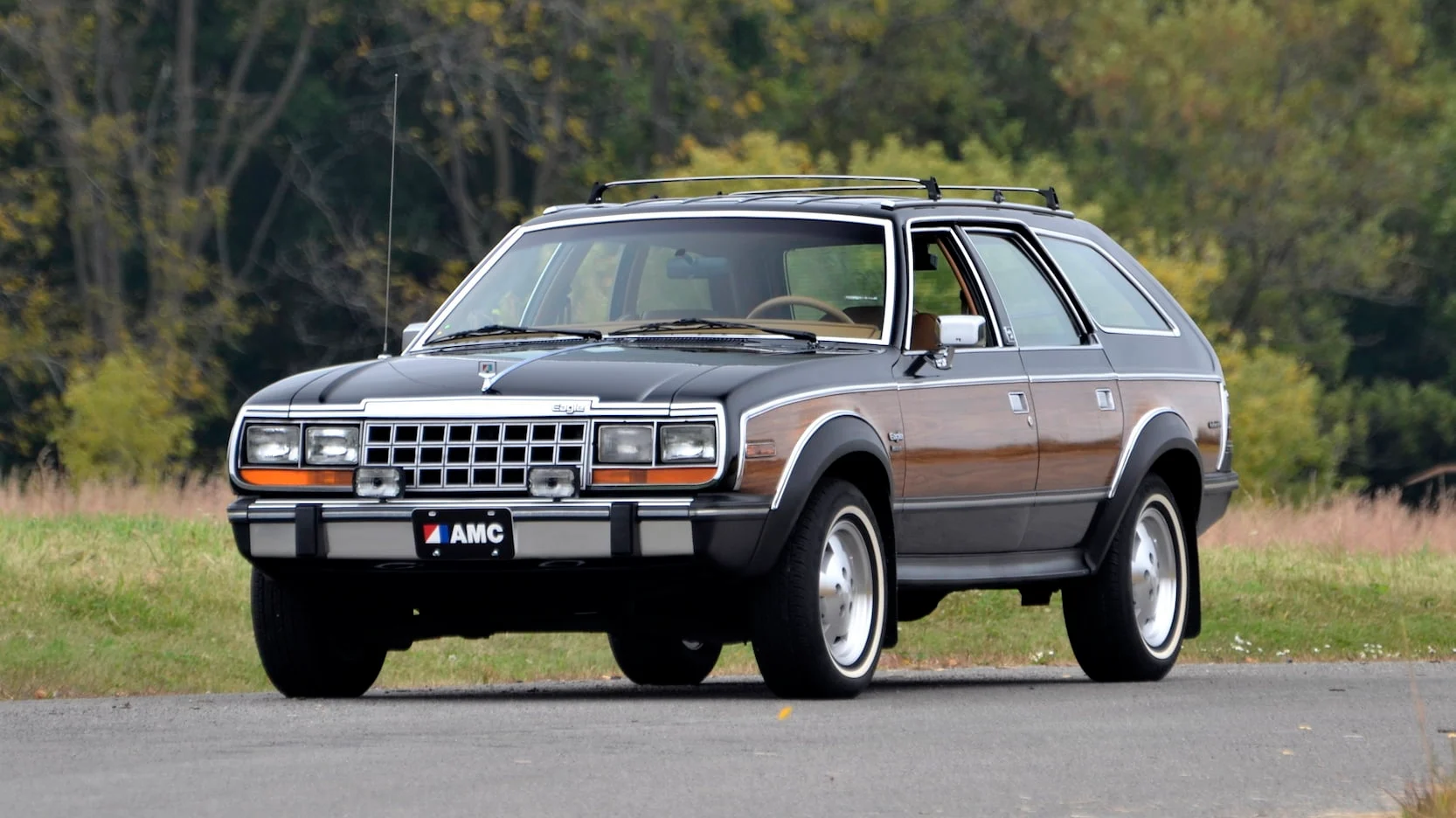
The AMC Eagle’s full-time four-wheel-drive system, combined with its comfortable and practical design, made it a popular choice for buyers seeking a versatile and capable vehicle.
The Eagle’s success paved the way for the development of modern crossover SUVs, which have become one of the most popular segments in the automotive market.
Despite its pioneering design and innovations, the AMC Eagle faced challenges in the market, including competition from traditional SUVs and changing consumer preferences. Production of the Eagle continued until 1987, with the car remaining a favorite among loyalists and enthusiasts.
The AMC Eagle was a groundbreaking vehicle that introduced the concept of the crossover SUV, blending the capabilities of a four wheel drive vehicle with the comfort and practicality of a passenger car.
Its innovative design, advanced engineering, and versatile capabilities made it a true pioneer in the automotive world.
The Eagle’s legacy can be seen in the modern crossover SUV market, which continues to grow in popularity. The AMC Eagle was a groundbreaking vehicle that introduced the concept of the crossover SUV, blending the capabilities of a four wheel drive vehicle with the comfort and practicality of a passenger car.
Its innovative design, advanced engineering, and versatile capabilities made it a true pioneer in the automotive world.
8. BMW 7 Series (E32)
The BMW 7 Series (E32), introduced in 1986, was a luxury sedan that set new standards for innovation, technology, and performance in the automotive industry.
As the second generation of BMW’s flagship sedan, the E32 showcased a range of advanced features and cutting-edge technologies that were well ahead of their time. The E32’s combination of luxury, performance, and innovation made it a true pioneer in the luxury car segment.
One of the most significant innovations of the BMW 7 Series (E32) was its introduction of advanced electronic systems.
The E32 was one of the first cars to feature an integrated onboard computer, which provided drivers with real-time information on fuel consumption, range, and vehicle status.
The car also introduced BMW’s Check Control system, which monitored various vehicle functions and alerted the driver to any potential issues.
These advanced electronic systems set new standards for vehicle diagnostics and driver information. The E32 also featured a range of advanced safety technologies, including anti-lock brakes (ABS) and electronic traction control.
These systems provided enhanced stability and control, reducing the risk of skidding and loss of traction.
The E32 was also equipped with a sophisticated suspension system, which included electronically controlled damping and self-leveling rear suspension. These features contributed to the car’s exceptional ride quality and handling characteristics.
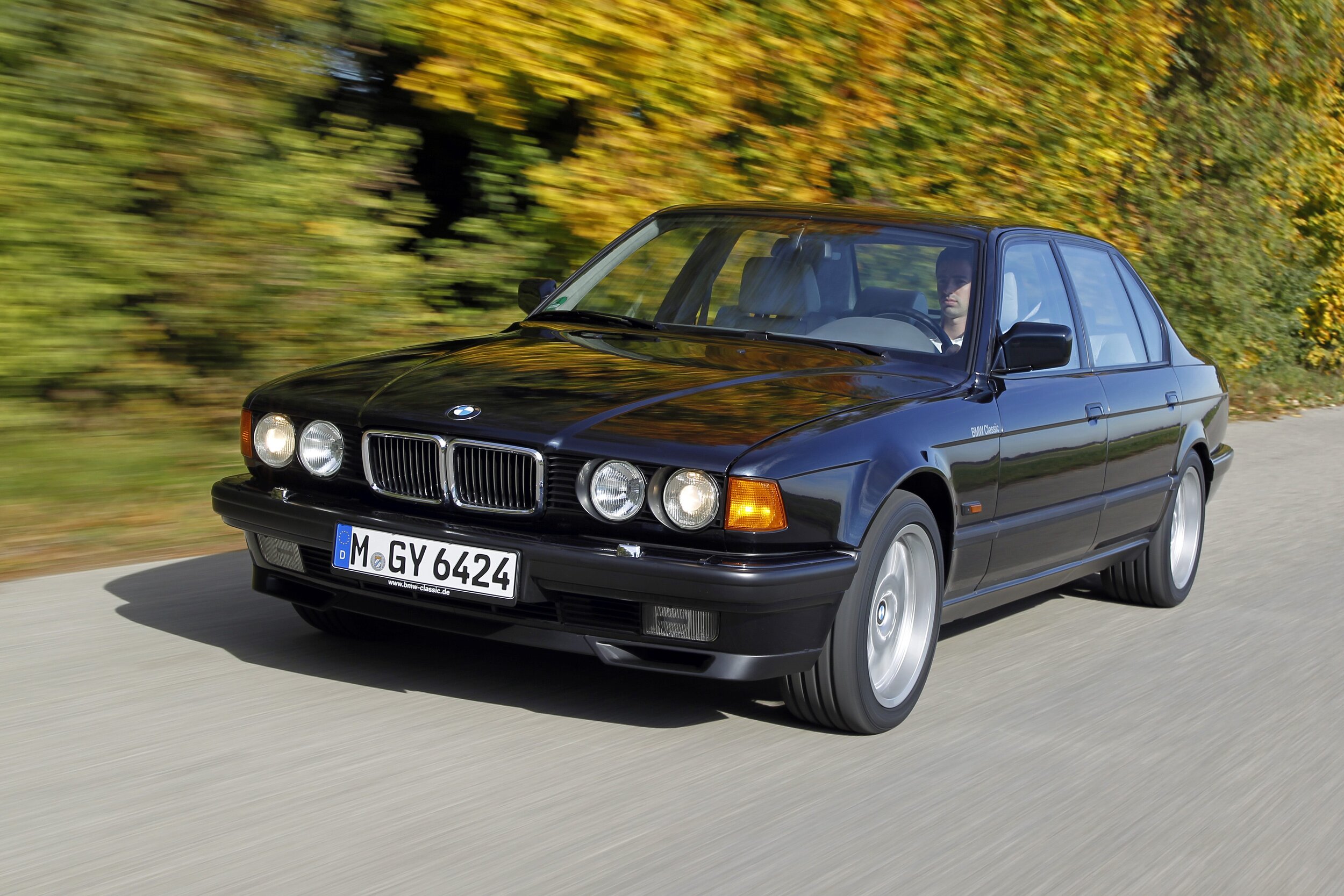
Under the hood, the BMW 7 Series (E32) was powered by a range of powerful and efficient engines, including inline-six, V8, and V12 options.
The top-of-the-line 750iL model was equipped with a 5.0-liter V12 engine that produced 296 horsepower, making it one of the most powerful luxury sedans of its time.
The E32’s performance-oriented design and advanced engineering provided a smooth and exhilarating driving experience.
The interior of the E32 was designed with luxury and comfort in mind. The spacious cabin featured high-quality materials, comfortable seating, and a range of advanced features, such as power-adjustable seats, automatic climate control, and a premium sound system.
The E32 also introduced BMW’s innovative double-glazed windows, which provided enhanced sound insulation and improved cabin comfort.
The BMW 7 Series (E32) was also a pioneer in terms of environmental performance. The E32 735i model was one of the first cars to feature a catalytic converter, which significantly reduced harmful emissions and set new standards for environmental performance in the luxury car segment.
The BMW 7 Series (E32) was a groundbreaking luxury sedan that introduced a range of advanced technologies and innovative features.
Its combination of luxury, performance, and innovation made it a true pioneer in the automotive world, setting new standards for the luxury car segment.
9. Lancia Lambda
The Lancia Lambda, introduced in 1922, was a revolutionary vehicle that showcased a range of innovative engineering and design features that were well ahead of their time.
Designed by Vincenzo Lancia, the Lambda set new standards for automotive engineering and influenced the development of future vehicles. The Lambda’s combination of advanced technology, innovative design, and exceptional performance made it a true pioneer in the automotive world.
One of the most significant innovations of the Lancia Lambda was its use of a unitary (monocoque) body construction.
At a time when most cars were built on separate chassis and body structures, the Lambda’s unitary construction provided increased strength, reduced weight, and improved handling characteristics.
This innovative design set a precedent for future automotive construction techniques and is now a standard in the industry.
The Lambda was also one of the first cars to feature an independent front suspension system. This advanced suspension design provided a smoother and more comfortable ride, improving the car’s handling and stability.
The Lambda’s suspension system, combined with its lightweight construction, contributed to its exceptional performance and driving dynamics.
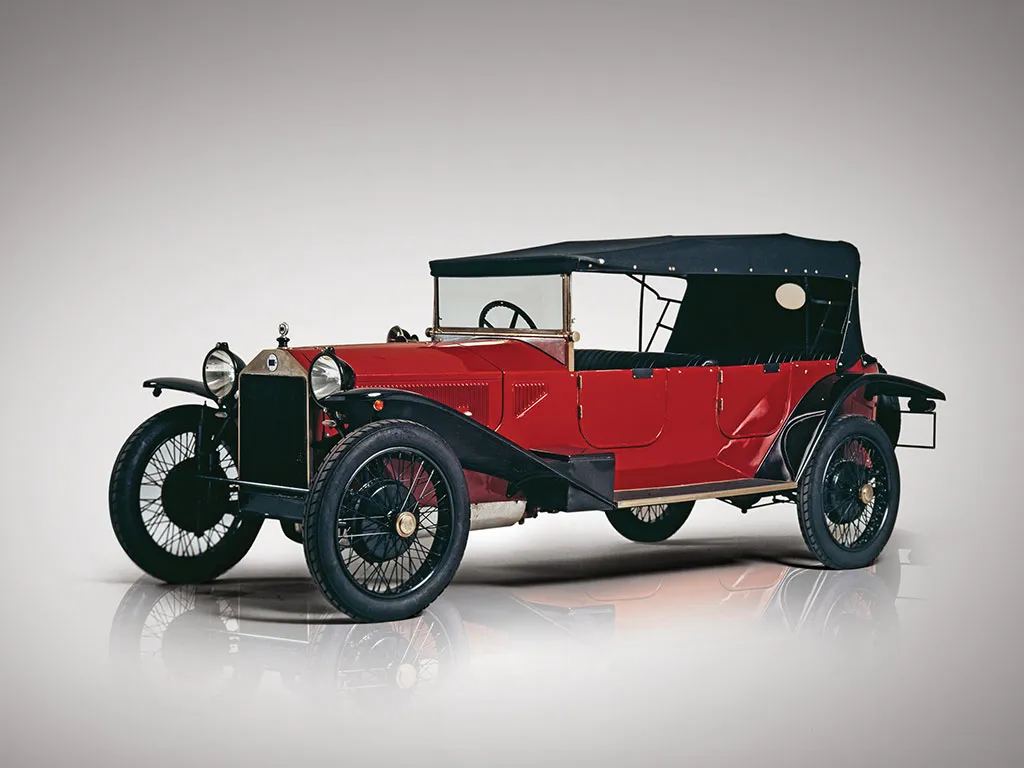
Under the hood, the Lancia Lambda was powered by a range of advanced engines, including a 2.1-liter V4 engine that produced 49 horsepower.
The car’s engine was mounted low in the chassis, providing a lower center of gravity and improved weight distribution. This layout enhanced the Lambda’s handling and stability, making it a joy to drive.
The design of the Lancia Lambda was equally innovative, featuring a sleek and aerodynamic body with smooth lines and a low-slung profile.
The car’s distinctive design elements, such as its narrow grille and rounded fenders, gave it a unique and elegant appearance. The Lambda’s design set new standards for automotive styling and influenced the development of future vehicles.
Inside, the Lancia Lambda offered a comfortable and well-appointed cabin with a range of advanced features for its time.
The spacious interior featured high-quality materials, comfortable seating, and an intuitive layout. The car’s dashboard was equipped with clear and easy to read gauges, providing drivers with all the information they needed at a glance.
The Lancia Lambda was a groundbreaking vehicle that introduced a range of advanced engineering and design features.
Its unitary construction, independent front suspension, and innovative design set new standards for the automotive industry and influenced the development of future vehicles. The Lambda remains an iconic and influential car that was undeniably ahead of its time.
10. Porsche 959
The Porsche 959, introduced in 1986, was a revolutionary supercar that set new benchmarks for performance, technology, and engineering.
As one of the most advanced and sophisticated cars of its era, the 959 showcased a range of cutting-edge features that were well ahead of their time.
The 959’s combination of innovative technology, exceptional performance, and advanced engineering made it a true pioneer supercar.
One of the most significant innovations of the Porsche 959 was its advanced all-wheel-drive system.
The 959 was one of the first supercars to feature a fully integrated and electronically controlled all-wheel-drive system, known as Porsche-Steuer Kupplung (PSK).
This system provided superior traction, stability, and handling in various driving conditions, making the 959 a formidable performer on both the road and the racetrack.
Under the hood, the Porsche 959 was powered by a 2.85-liter twin-turbocharged flat-six engine that produced 444 horsepower.
This advanced engine featured water-cooled cylinder heads, sequential turbocharging, and an intercooler, providing exceptional power and performance.
The 959’s engine was paired with a six-speed manual transmission, allowing for precise and responsive gear changes.

The Porsche 959’s performance capabilities were further enhanced by its lightweight construction and advanced aerodynamics.
The car’s body was made of a combination of lightweight materials, including aluminum, Kevlar, and Nomex, reducing weight and improving agility.
The 959’s aerodynamic design, with its smooth lines and integrated rear wing, reduced drag and provided increased downforce, contributing to its exceptional stability at high speeds.
The interior of the Porsche 959 was designed with a focus on luxury and driver comfort. The cabin featured high-quality materials, comfortable seating, and a range of advanced features, such as air conditioning, power-adjustable seats, and a premium sound system.
The 959’s interior provided a comfortable and luxurious environment, complementing its high-performance capabilities.
The Porsche 959 was also a pioneer in terms of safety and technology. The car was equipped with advanced safety features, such as anti-lock brakes (ABS), adjustable suspension, and run-flat tires.
These features provided enhanced safety and control, making the 959 one of the most advanced and secure supercars of its time.
The Porsche 959 was a groundbreaking supercar that introduced a range of advanced technologies and innovative features.
Its combination of all-wheel-drive, advanced aerodynamics, and exceptional performance set new standards for the supercar segment. The 959 remains an iconic and influential car that was undeniably ahead of its time.

